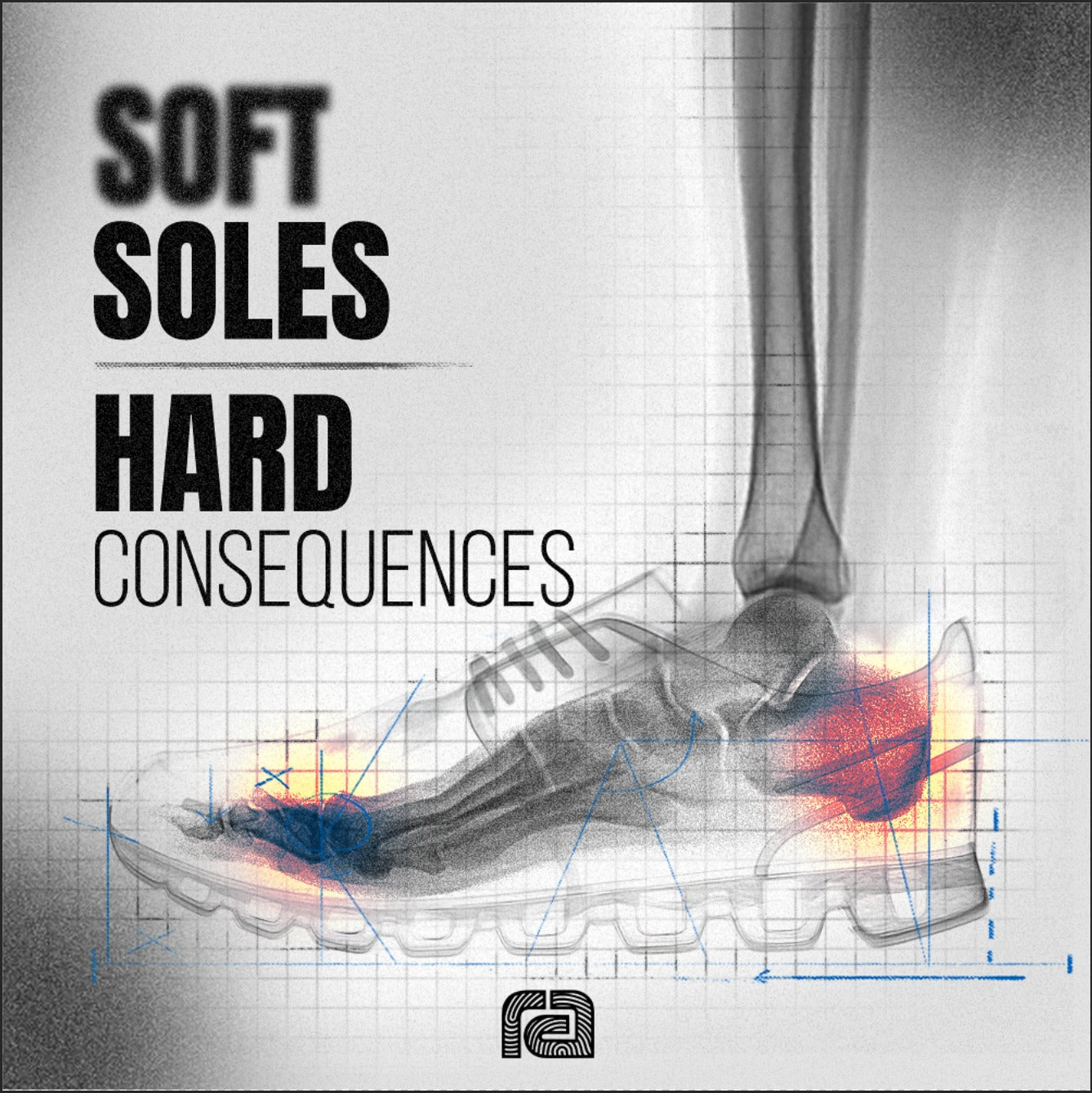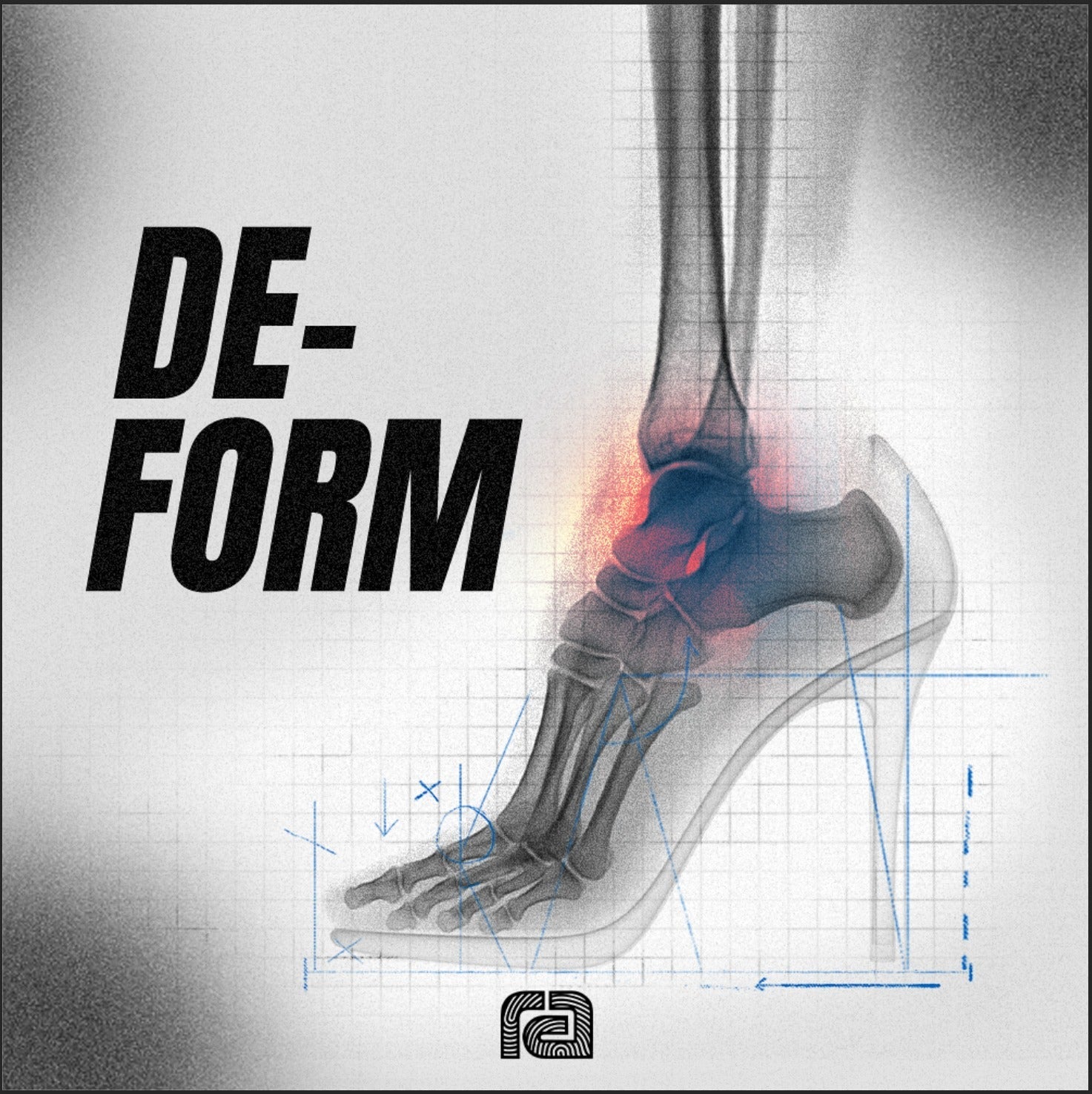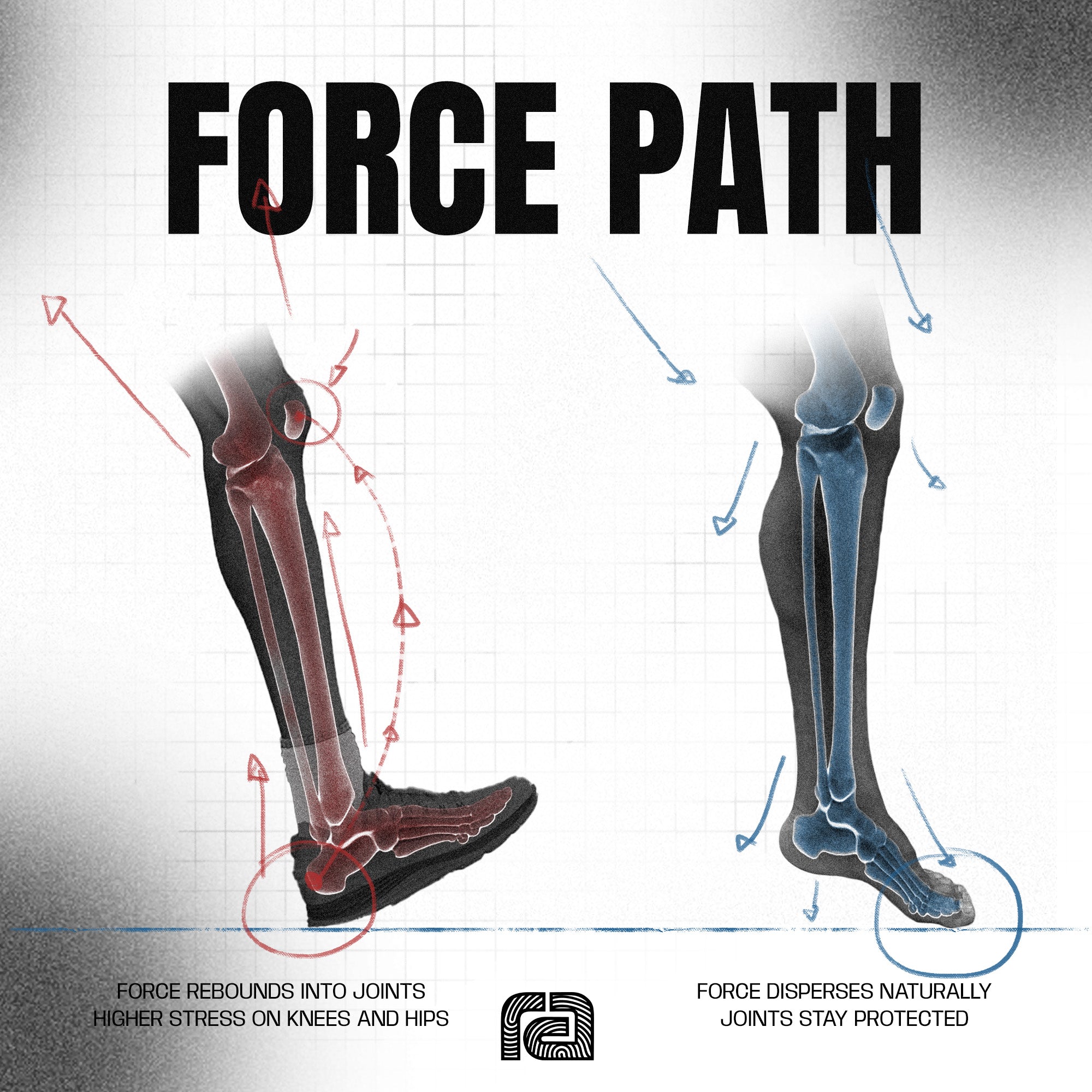
Maximal Cushion, Maximum Impact: The Biomechanics That Don't Add Up
Soft on the outside, harder on your body. New research reveals how maximal running shoes may increase injury risk.
More cushion doesn’t always mean more protection.
For years, maximal running shoes,those with thick, highly cushioned soles,have been marketed as the solution to joint impact and running-related injuries. But a 2018 study published in the Orthopaedic Journal of Sports Medicine raises a serious biomechanical red flag.
Maximal shoes don’t reduce impact. They increase it.
This study shows that the extra cushion doesn’t absorb force the way it promises. Instead, it may lead to greater loading on the joints and higher risk of injury.
The Study: What Was Tested
Researchers from Oregon State University-Cascades and Harvard Medical School conducted a controlled study comparing maximal running shoes and neutral running shoes.
-
-
-
-
-
-
-
-
Participants: 15 female recreational runners
-
Distance: 5K treadmill run
-
Footwear Tested: Maximal shoe vs. Neutral shoe
-
Metrics Measured: Impact peak, loading rate, stride, and step mechanics
-
-
-
-
-
-
-
Each runner was tested before and after a 5K run to observe both initial and fatigued running biomechanics.
What They Found
The results were clear:
-
-
-
-
-
-
-
-
Runners wearing maximal shoes experienced significantly higher impact forces than when running in neutral shoes
-
Vertical loading rate (how quickly force is applied to the body) was higher in maximal shoes
-
These effects persisted even after fatigue—a state when injury risk is known to increase
-
-
-
-
-
-
-
“Contrary to our hypothesis, impact peak and loading rate were greater in the maximal shoe condition.”
— Pollard et al., 2018
Increased impact loading has been repeatedly associated with:
-
-
-
-
-
-
-
-
Tibial stress fractures
-
Plantar fasciitis
-
Joint overload
-
-
-
-
-
-
-

Why This Matters
Maximal shoes promise more comfort and shock absorption. But according to this study, the extra cushioning may distort natural feedback from the ground and alter gait in ways that increase force.
More cushion = more confidence to strike harder = more force to absorb
This is especially concerning because:
-
-
-
-
-
-
-
-
Runners assume they’re protecting themselves
-
The injury risk may rise without any obvious warning
-
Over time, the effect is compounding with every step
-
-
-
-
-
-
-
Rethinking the Story
The idea that “more padding = less impact” is now seriously in question.
The study’s findings support an alternative view:
-
-
-
-
-
-
-
-
Natural movement with minimal interference = lower impact loads
-
Less cushion = better ground feedback and gait control
-
-
-
-
-
-
-
This doesn’t mean barefoot footwear eliminates injury risk—but it challenges the assumption that more cushioning is safer.
Three Comfort Myths This Study Exposes
-
-
-
-
-
-
-
-
Myth 1: “More cushioning means less impact.”
The promise of padding is reduced force but the data says otherwise. Runners in maximal shoes experienced higher impact forces. More foam didn’t absorb the shock—it may have encouraged runners to strike harder. -
Myth 2: “Fatigue makes cushioning more important.”
Fatigue usually increases injury risk, and cushioned shoes are thought to protect against that. But even post-5K, runners in maximal shoes showed greater impact loading. The extra foam didn’t compensate for fatigue, it compounded it. -
Myth 3: “Thick soles protect your joints.”
The bulk of maximal shoes is often marketed as joint protection. Yet higher loading rates suggest the opposite. Cushioning changed how runners moved but not in a protective way.
-
-
-
-
-
-
-
Conclusion
Sometimes the foot doesn’t need more. It needs less in the way.
This study adds to a growing body of evidence suggesting that natural mechanics are more protective than overengineered soles. If you're serious about reducing injury risk, the answer might not be in more foam but in smarter movement.
At RARA, we believe protection comes not from adding more but from trusting what evolution already built
Reference
Pollard, C.D., Ter Har, J.A., Hannigan, J.J., & Norcross, M.F. (2018).
Influence of Maximal Running Shoes on Biomechanics Before and After a 5K Run.
Orthopaedic Journal of Sports Medicine, 6(6). PMC5992812



